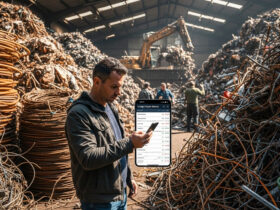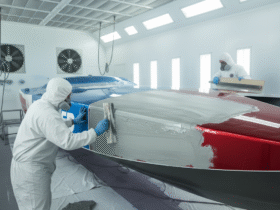Have you ever wondered why some cable hauling operations go smoothly while others result in tangled ropes or damaged cables? Are you curious about how to choose the right wire rope sizes or the safest way to manage electrical cable pulling? If you’ve been searching for answers, you’re in the right place.
In this post, we’ll walk through everything you need to know about installing cable hauling ropes. We’ll look at the tools you’ll need, how to measure wire rope diameter, ways to keep your ropes and machinery in top shape, plus safety measures that align with Australian standards. This guide is intended to help you avoid common pitfalls and handle any issues that come up, like rope twisting or jamming.
Essential Tools and Equipment
To perform cable hauling successfully, you’ll need the right set of tools. Having proper cable hauling equipment makes the entire operation safer and smoother. Not to mention, using the recommended gear can help maintain wire rope strength and prevent damage.
Cable Hauling Equipment Basics
At a minimum, you’ll want a dependable winch, sturdy pulleys, and protective sheaves. A well-regulated winch is essential for controlling tension, while pulleys help guide the rope through bends and corners. Make sure that each piece of equipment is rated for the load you intend to carry, and check for wear and tear before every use.
Selecting a Suitable Wire Rope Spool
Choosing the right wire rope spool is an often-overlooked task. The spool must match your rope’s diameter and length so the rope can unwind without tangling or twisting. It’s also wise to store the spool in a cool, dry place to avoid corrosion. When you’re ready to use the rope, let it unspool carefully to reduce internal friction.
Types of Wire Rope and Their Uses
There are several types of wire rope, including stainless steel rope for marine environments, galvanised steel rope for general industrial uses, and synthetic ropes known for their lightweight handling. Each has pros and cons in terms of weather resistance, flexibility, and cost. By matching the rope type to the job’s demands, you get the best combination of safety and efficiency.
Preparing for Rope Installation
Before you start hauling, thorough preparation is key. This phase involves measuring wire rope diameter accurately, selecting the right wire rope sizes for your project, and examining steel cable strength to be certain you won’t face any mid-operation mishaps.
Measuring Wire Rope Diameter and Choosing the Correct Wire Rope Sizes
Accurate measurements of wire rope diameter are essential because a rope that’s too small could snap under load, while a rope that’s too large might become unmanageable. Use a calliper or dedicated rope gauge for more precise readings. Once you have the diameter, check an approved size chart or manufacturer guidelines to confirm that the rope can safely handle the weight you plan to haul.
Assessing Steel Cable Strength for Your Project
Steel cable is valued for its robust load-bearing capability, but how do you decide if it’s right for your project? First, calculate the maximum pulling force you’ll place on the rope. Then, add a safety margin—often recommended at 20–30% above the highest expected load. This margin covers any unexpected surges or uneven stresses during electrical cable pulling.
Step-by-Step Installation Process
The installation process is where all the careful planning and equipment checks come together. If you follow a structured method, you’ll minimise the chance of errors and keep the project moving efficiently.
Setting Up the Worksite and Machinery
Start by clearing the worksite of any obstacles that might snag the rope or cause uneven tension. Position your machinery—such as winches and pulleys—in alignment with the route you’re pulling the cable. Mark out the path to avoid confusion and place safety barriers around the active zones.
Techniques for Rope Installation and Handling
When you begin rope installation, feed the rope from the wire rope spool smoothly, keeping it under light tension to prevent tangles. Guide it through pulleys or sheaves at every change in direction. If you see any kinks developing, stop and straighten them out right away.
Is There a Safe Method for Connecting Wire Rope?
Connecting wire rope sometimes involves using specialised fittings like wire rope grips or mechanical splices. For a secure and reliable connection, follow manufacturer instructions on tightening and spacing. Double-check that all connections are firmly in place and well lubricated, if needed.
Adjusting Tension for Maximum Efficiency
Once the rope is in position, gradually increase tension to the required level. Track tension levels with a gauge or an inbuilt monitor on your winch system. If something feels off—like the rope is vibrating or straining—pause and assess your setup. Adjust as necessary to achieve a smooth pull that neither exceeds nor undershoots the rope’s load capacity.
Safety Measures and Best Practices
Safety is paramount, especially when dealing with heavy machinery and large steel cables. In Australia, strict guidelines govern cable hauling operations, so it’s essential to know the basics and stick to them at all times.
Australian Safety Regulations and Guidelines
Australia sets rigorous standards for workplace safety, from load-testing protocols to mandatory signage around active work zones. Depending on the scope of your project, you might need to consult the relevant Australian Standards (AS) documentation for specific guidelines. Complying with these standards not only keeps everyone safe but also helps you avoid legal issues.
Recommended Personal Protective Equipment (PPE)
To protect yourself and your team, always wear suitable PPE. This typically includes a hard hat, safety glasses, gloves, and high-visibility clothing. In environments where there’s a risk of flying debris, a face shield might be necessary as well. Sturdy boots with good traction are a must if you’re moving around machinery or carrying equipment across uneven ground.
Common Mistakes to Avoid in Rope Installation
A frequent mistake is failing to inspect the rope regularly. Even if your cable haul is going smoothly, periodic checks can reveal hidden damage or wear. Another error is rushing the tensioning process—applying force too quickly can cause sudden strain on the rope. Also, never neglect the environment: wet or slippery conditions can reduce traction and increase the likelihood of an accident.
Conclusion
We’ve covered a lot of ground in this guide, from the types of wire rope and the fundamentals of cable hauling equipment to troubleshooting knots and twists. You now know that measuring wire rope diameter accurately, checking steel cable strength, and setting up a safe worksite are absolutely key for a smooth operation. Rope installation is more than just pulling cables—it’s a series of small decisions and checks that give you peace of mind.
Remember to keep an eye on regulations in Australia, practise regular maintenance, and use your best judgement when deciding if it’s time for a replacement. By focusing on safe methods of connecting wire rope, managing tension properly, and adopting robust safety protocols, you’ll reduce the risk of accidents and keep productivity levels high.










Leave a Review